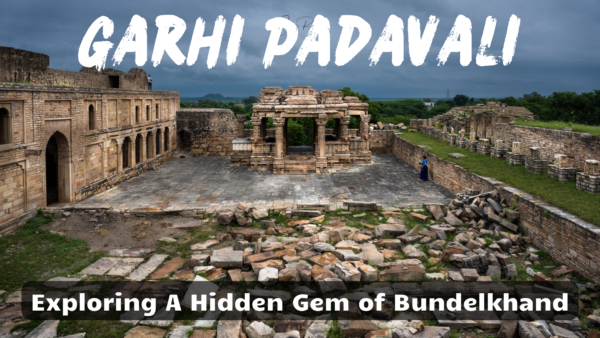Time and again, we come across a monument in an average Indian village which makes us ponder about the wonder that was India. The day trip to the archaeological triumvirate of Morena was no different. Even the cloudy sky provided the perfect set-up for exploring the bewildering sites of Morena. We trod through the ruins of Bateshwar Group of Temples, amazed by how poignant the resurrected temples appeared. We were caught in a trance, fascinated by the ruins, and curious about the memories they carry. We left Bateshwar with a fulfilling heart, and eager to find out what the other two sites had to offer.
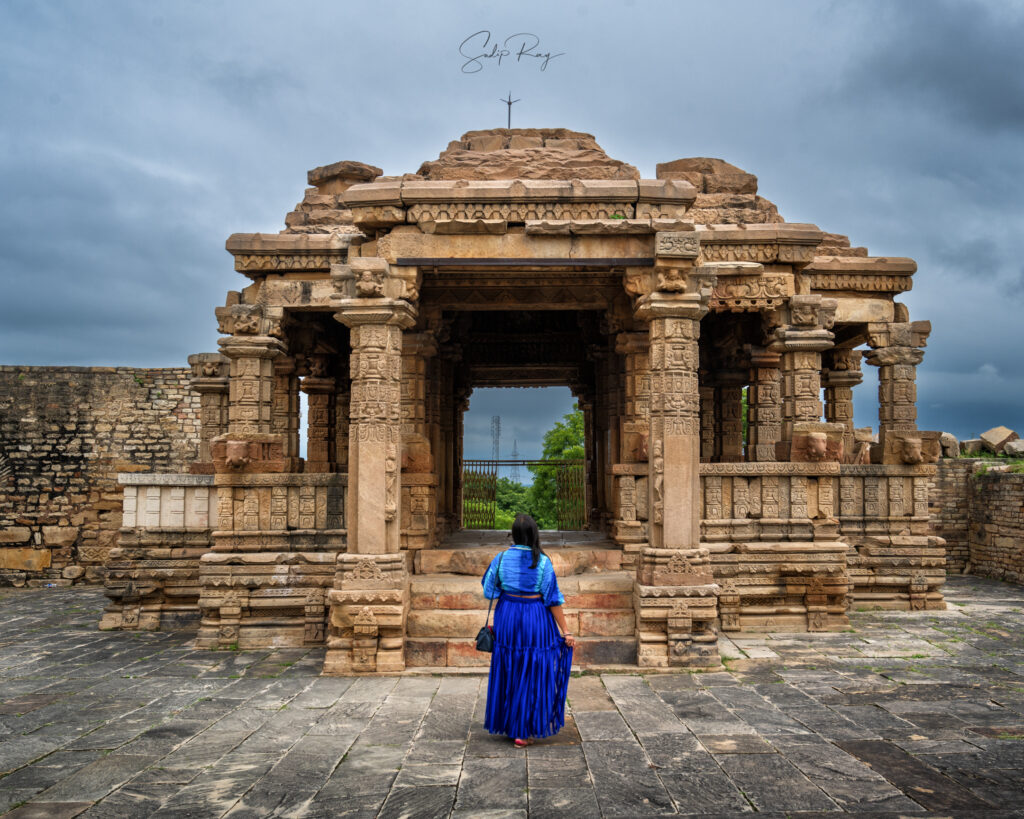
Table of Contents
Location of Garhi Padavali:
After we completed exploring Bateshwar, we took a short ride and reached the gates of Garhi Padavali. Garhi Padavali is one of the most interesting archaeological sites of Madhya Pradesh. Situated in Morena district, it lies 35 km away from Gwalior. It takes an hour of car ride to reach here from Gwalior.
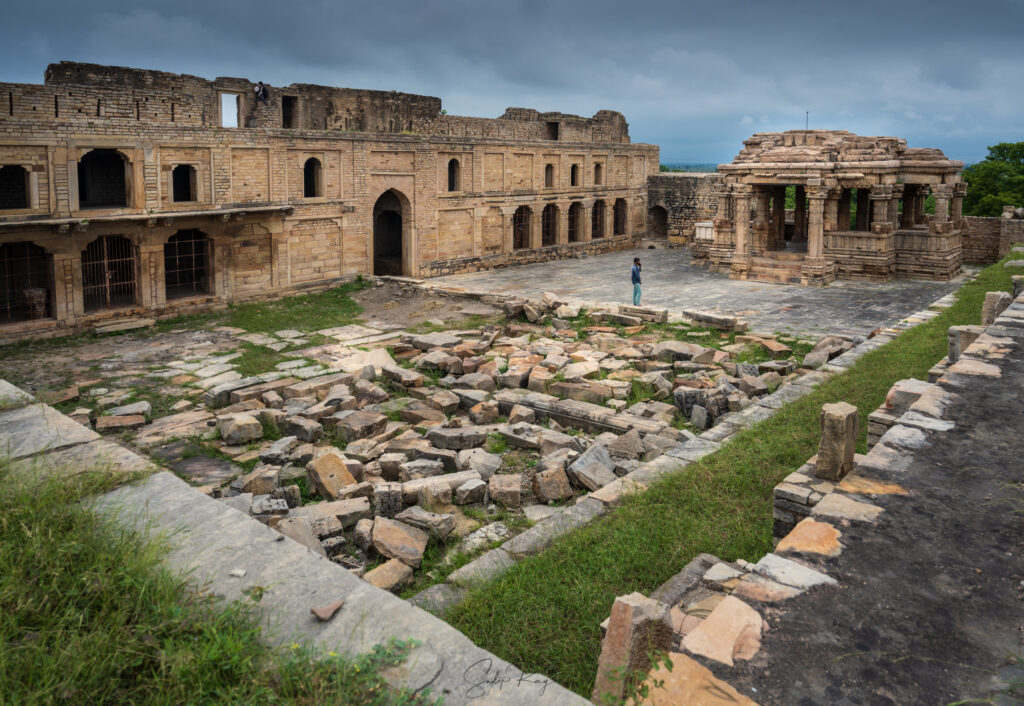
About Garhi Padavali:
As we entered the site, we were a bit confused with the sight before us. All we could see is a fortress or ‘Garhi’ and no sign of any temple. We climbed up a flight of dizzying stairs, flanked by two lions. We found that the real magic of Garhi Padavali lies where the stairs end. At the top, there stands an insanely carved ‘mukha mandapa’ of a temple, the main portion of which is now lost in oblivion.
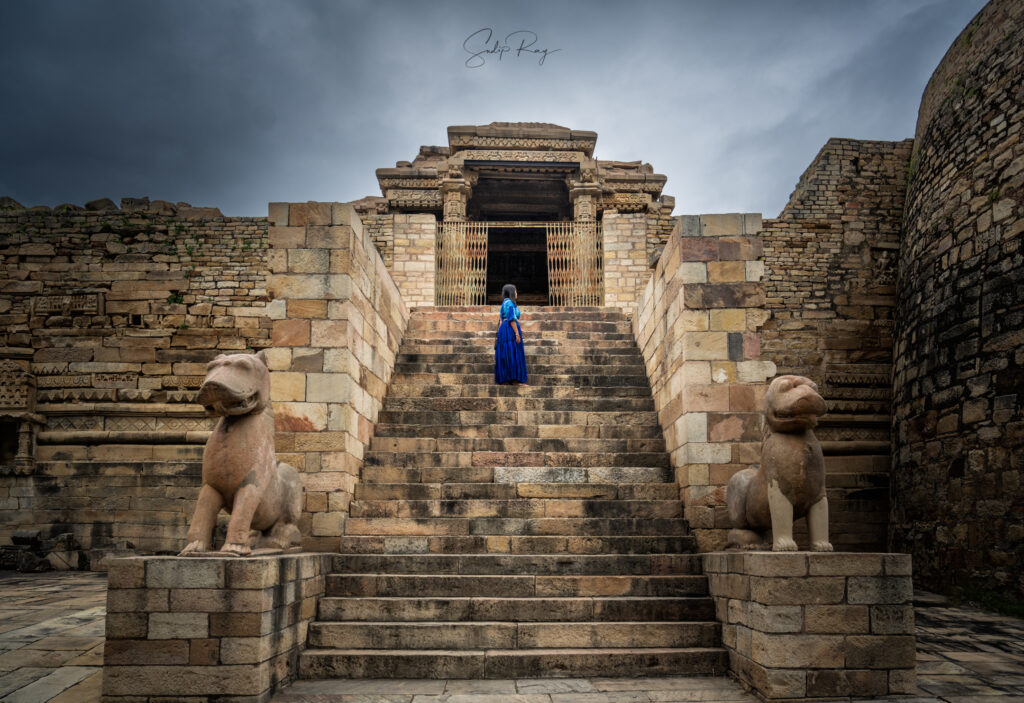
The temple was built in 10th century probably by the Kacchapaghata rulers and dedicated to Lord Shiva. Padavali, in general, dates back to 6th century as many artefacts from that era have been excavated from here. Especially, many Jain ruins were unearthed from here, which indicates that this place was perhaps an important Jain centre. Padavali was ruled by the Pratiharas and Chandelas before the Kachhapaghata dynasty.
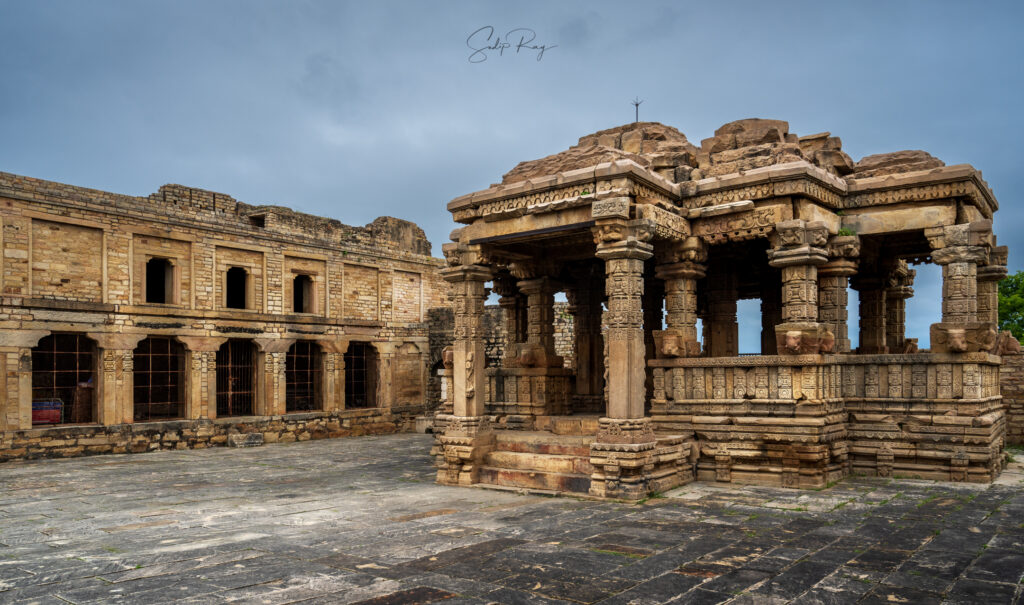
Like the other historical sites of this area, Garhi Padavali finds mention in the chronicles of celebrated British archaeologist Alexander Cunningham. He visited this temple in 1880s. At that time, he witnessed “an open pillared hall, or mandapa, 25 feet square” and its roof “supported on sixteen pillars”. He further added that “the sanctum itself is entirely gone, and only its two entrance pillars now remain…”
Moreover, the ‘Garhi’ or fortress was built by the Jat rulers of Gohadh and Dholpur in the 19th century.
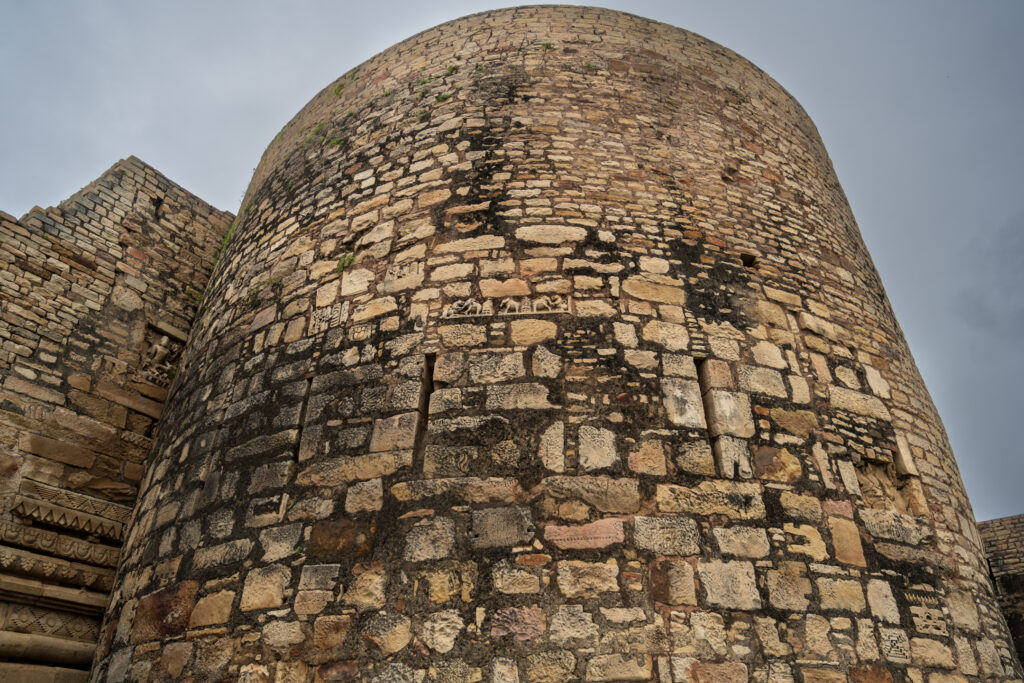
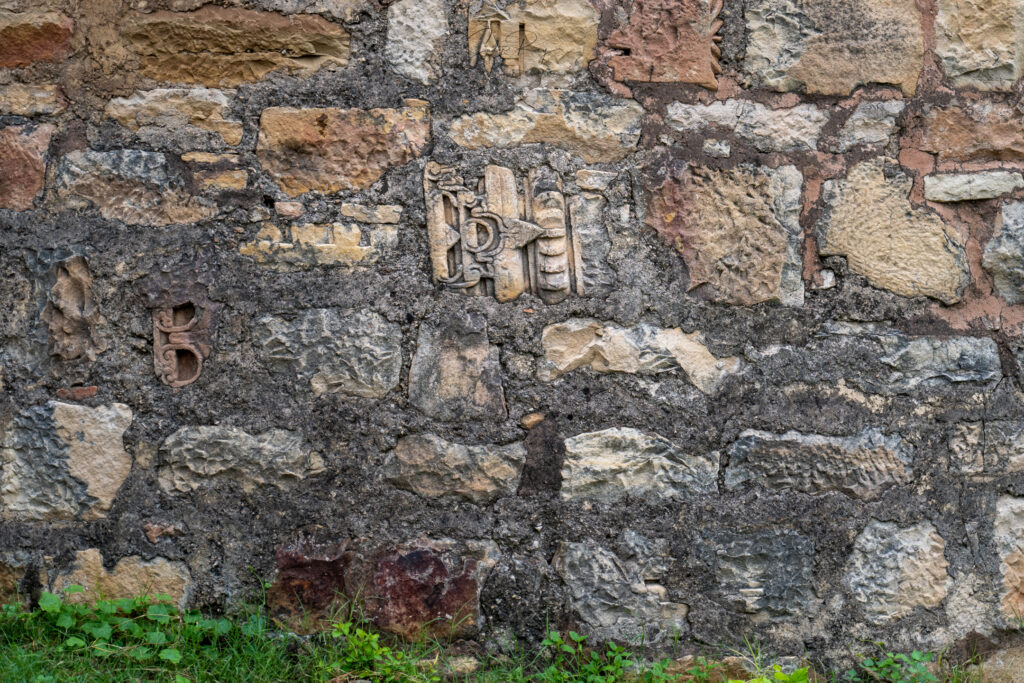
Carvings of Garhi Padavali:
The Garhi Padavali is undoubtedly one of the most intricately carved temples of India. There is hardly an inch left without elaborate sculptures. Every pillar and ceiling is decorated with ornate carvings. We were certainly taken aback by the richness of sculptural details on the walls.
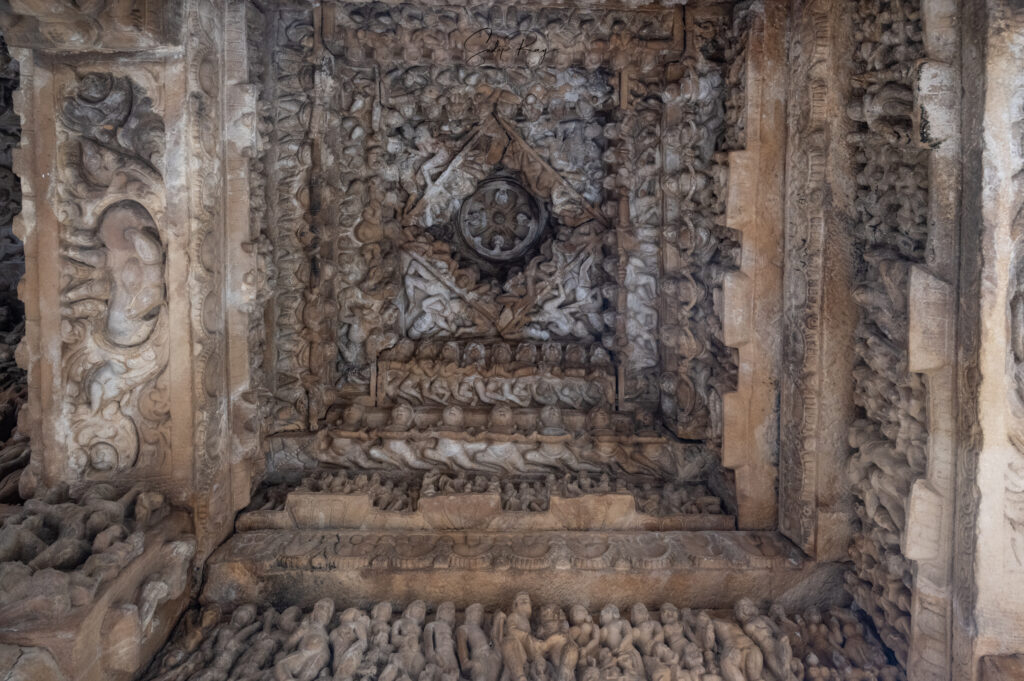
The most fascinating sculptures are carved on the four cardinal directions:
North panel: The Trimurti – Brahma, Vishnu, and Maheswara along with their consorts, and a lower section depicts the celebration following the birth of Shri Krishna.
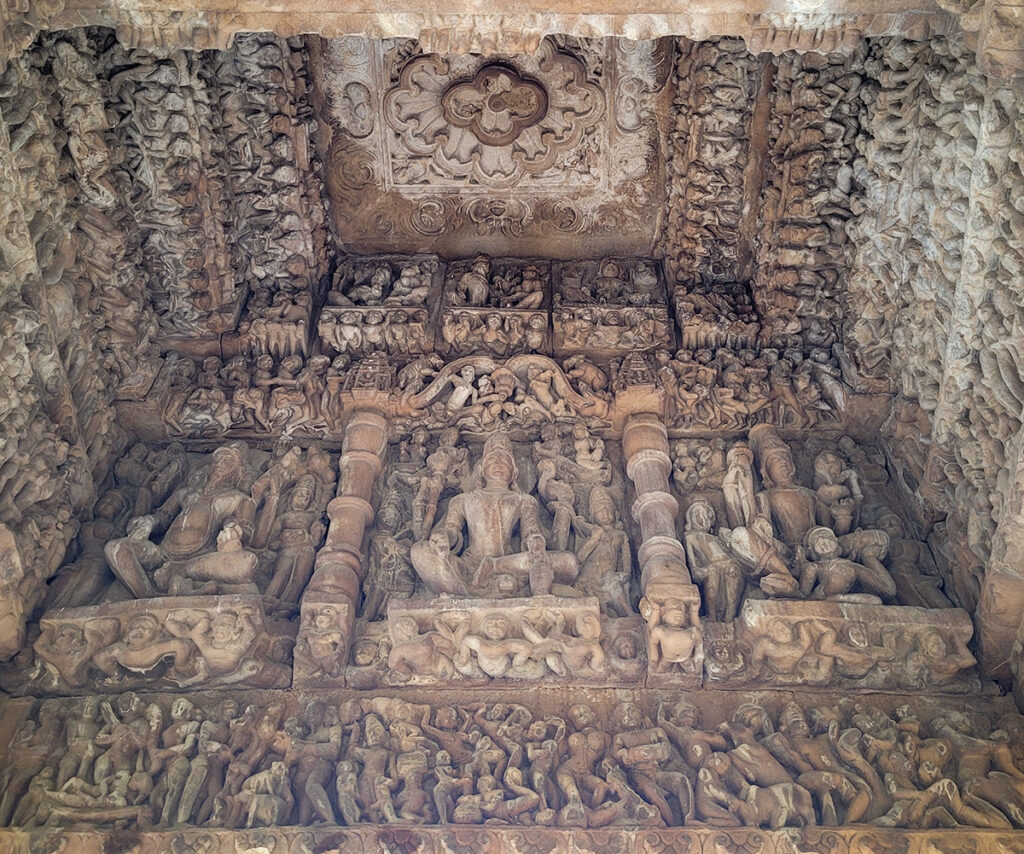
East panel: Goddess Chamunda, with the lower section depicting Rama Chandra and his Vanara army worshipping Shiva linga before embarking on the War of Lanka.
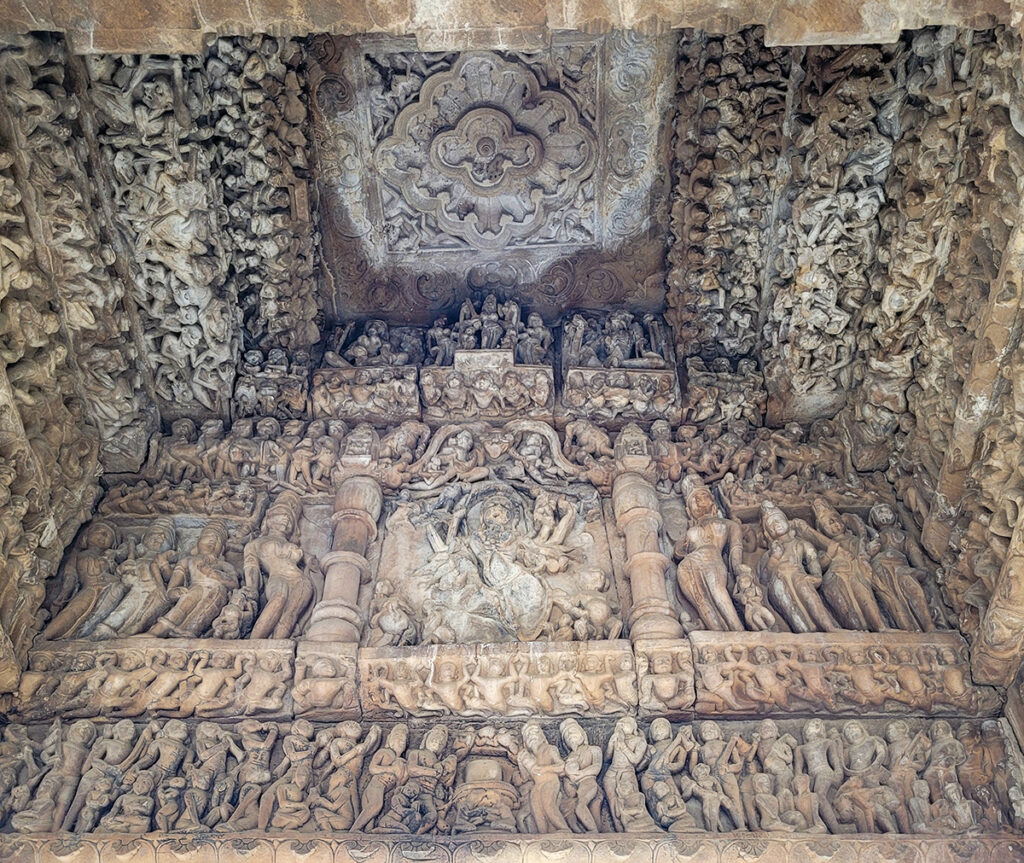
South panel: Lord Shiva with Parvati and Nandi, and the lower panel portrays the slaying of Abhimanyu in the battle of Kurukshetra.
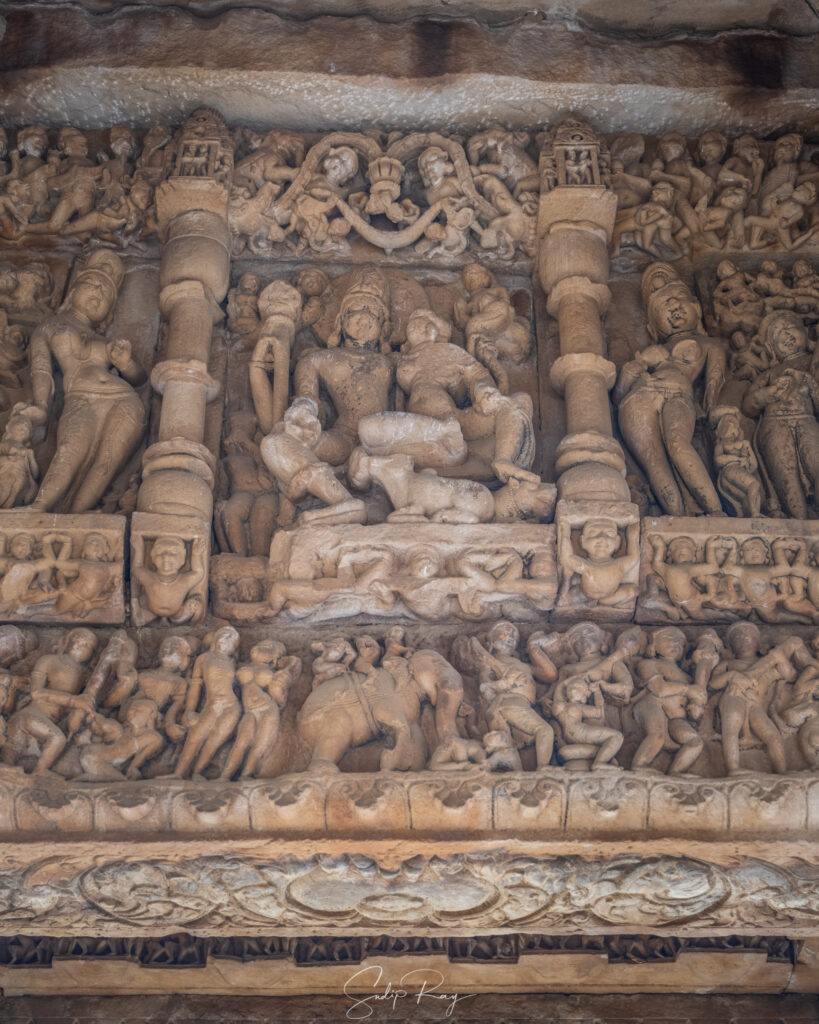
West panel: Lord Surya, the Sun God, and the panel beneath has carvings of Brahma, Vishnu, and Shiva.

Apart from countless religious iconography, Padavali also has its fair share of erotic sculptures. However, unlike Khajuraho, the erotic carvings are inside the temples here.
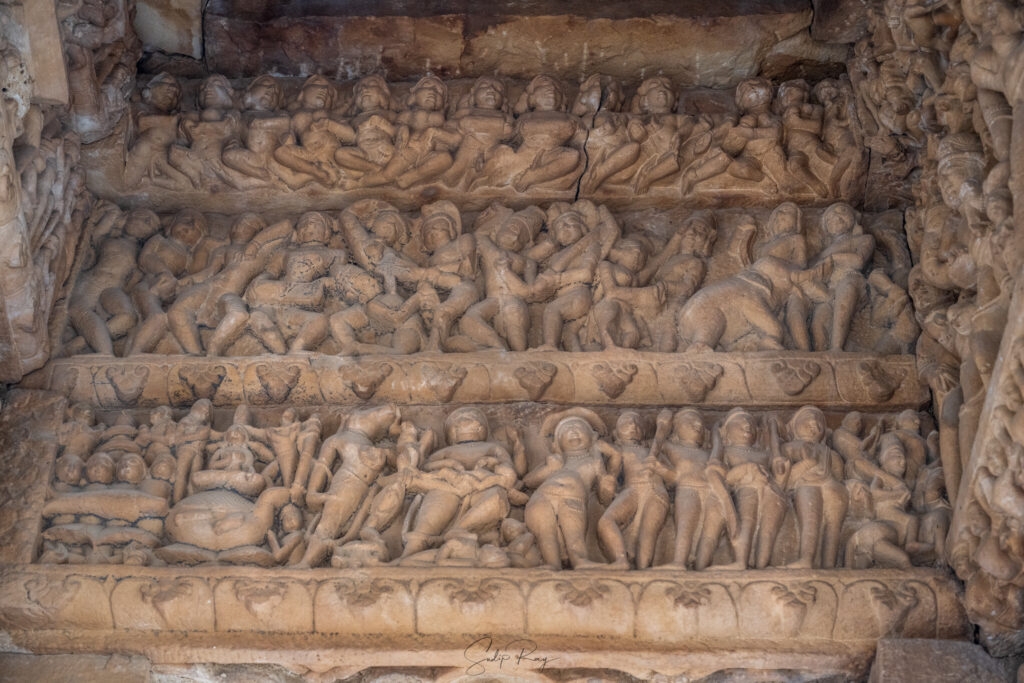
Many sculptural panels of Garhi Padavali are now displayed in the Gurjari Mahal State Museum and the ASI Museum inside Gwalior Fort.
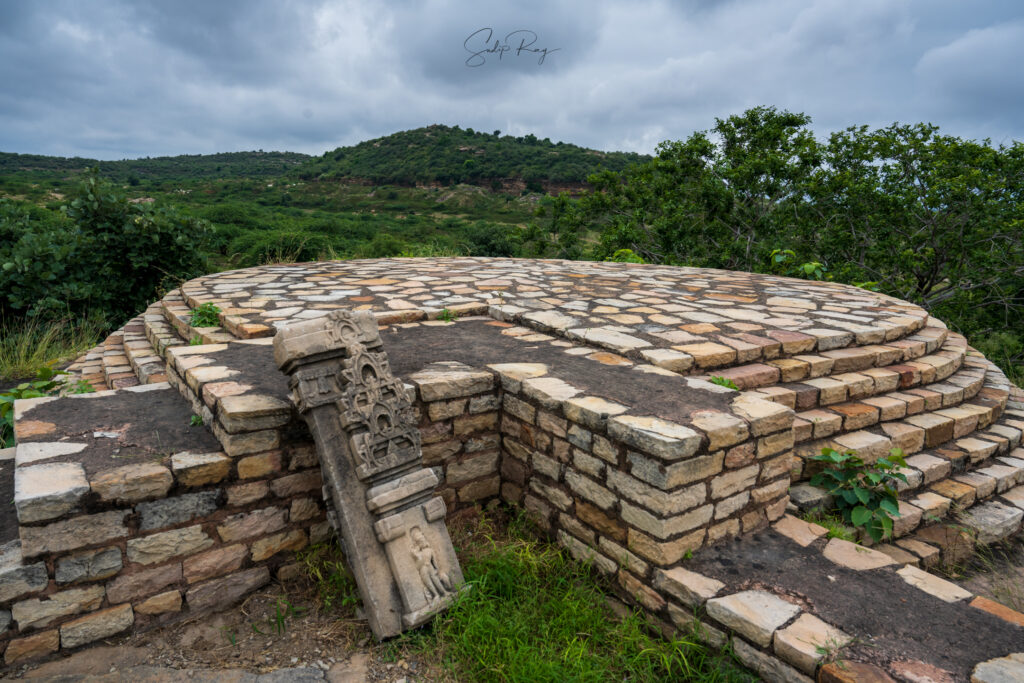
Know before you go:
1. Garhi Padavali is just 35 km from Gwalior and is an hour’s ride. Gwalior, in turn, can be easily reached from any part of India via trains and flights.
2. You can club Bateshwar, Garhi Padavali, and Mitaoli for an epic day trip from Gwalior.
3. There are no places of accommodation here. Though some hotels are available in Morena town, we suggest staying at Gwalior and exploring this area by making Gwalior your base. We stayed at Deobagh in Gwalior. You can book rooms at Deobagh from the site of Neemrana Hotels.
4. Also, you will find no shops for food or drinking water. So, carry a few snacks and drinking water with you.
5. Try visiting in the morning and avoid going after 3 PM. This place remains fairly deserted all throughout the day. So, it is better not to compromise on safety by visiting Padavali post-3 PM.
6. No entrance fee is required here.
7. Admire the beauty of the sculptures without touching them with your hands.
